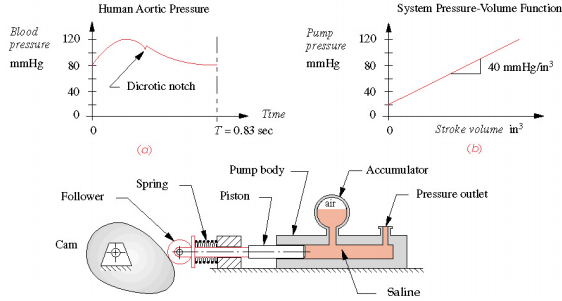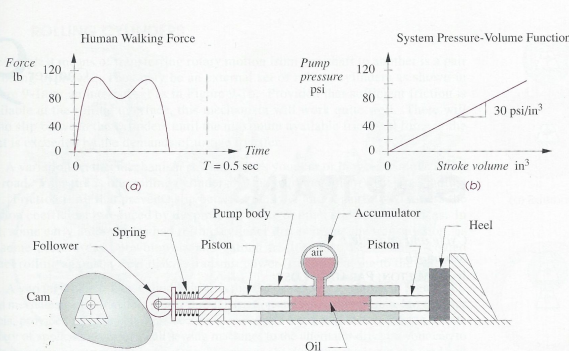Reference no: EM13542609
Question 1. Design of a cam system - Aortic Pressure. A cam-driven pump to simulate aortic pressure is needed to serve as a consistent, repeatable pseudo-human input to a hospital's operating room computer monitoring equipment, in order to test it daily. The figure shows a typical aortic pressure curve and the pump pressure-volume characteristic. (Assume the diameter of the cylinder is 1 unit.)

a) Design a displacement function to drive the piston to follow as close as possible the aortic pressure curve. Make sure that the jerk is finite along the whole rotation of the cam.
b) Create the equations and plot the cam profile for a radial, knife-edged follower (not a roller follower like the one in the figure) using Maple or Matlab.
c) Create a prototype of the cam and follower system and simulate using SolidWorks.
Question 2. Design of a cam system - Footwear. An athletic footwear manufacturer wants a device to test the rubber heels for their ability to withstand millions of cycles of force similar to the force that the human's foot applies to the ground. The figure shows a typical walker's force-time function. Consider that a loading cycle lasts for T = 0.5 sec. (Assume the diameter of the cylinder is 1 unit.)

a) Design a displacement function to drive the piston to follow as close as possible the aortic pressure curve. Make sure that the jerk is finite along the whole rotation of the cam.
b) Create the equations and plot the cam profile for a radial, knife-edged follower (not a roller follower like the one in the figure) using Maple or Matlab.
c) Create a prototype of the cam and follower system and simulate using SolidWorks.